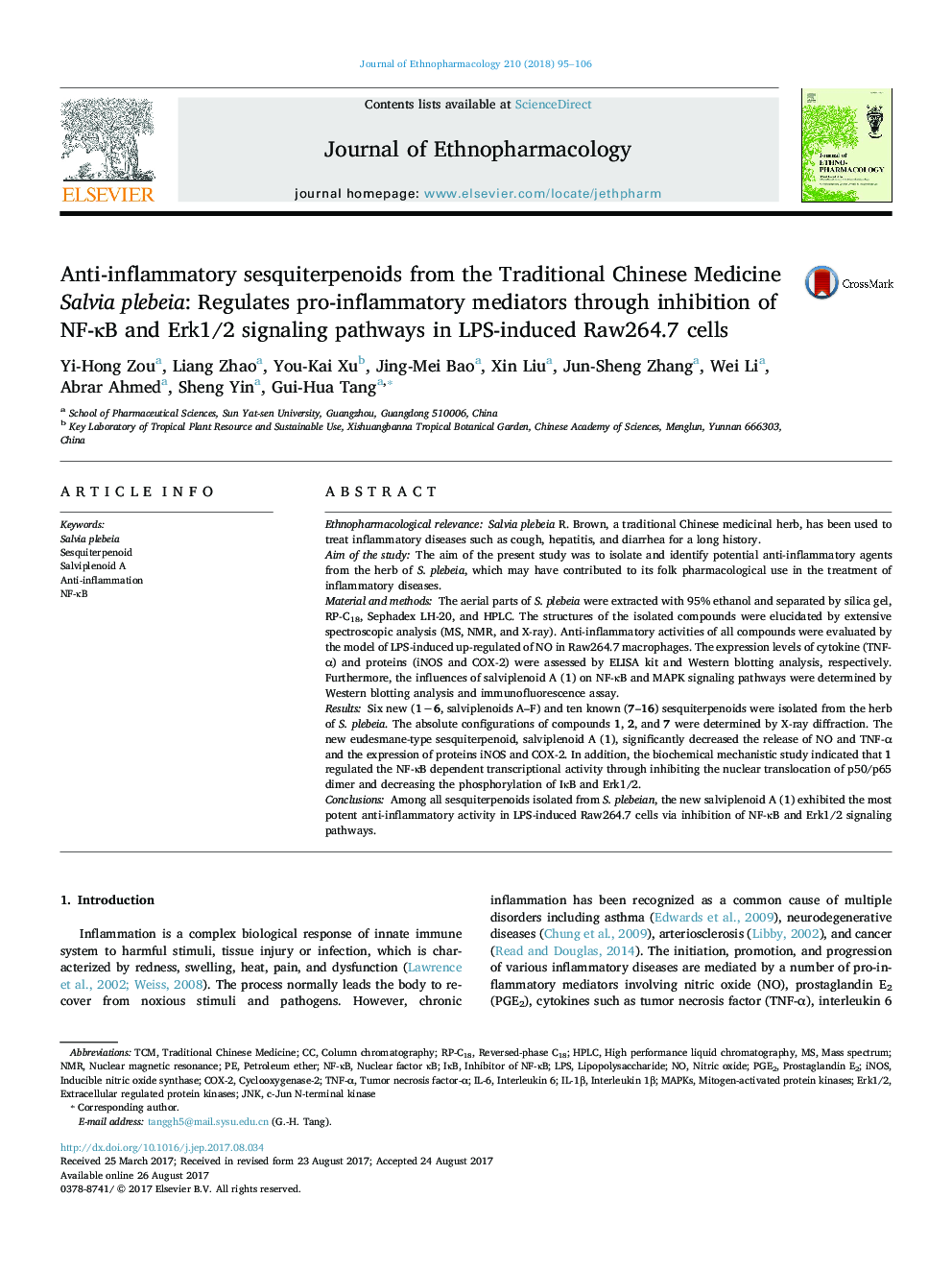| کد مقاله | کد نشریه | سال انتشار | مقاله انگلیسی | نسخه تمام متن |
|---|---|---|---|---|
| 5555935 | 1560352 | 2018 | 12 صفحه PDF | دانلود رایگان |

Ethnopharmacological relevanceSalvia plebeia R. Brown, a traditional Chinese medicinal herb, has been used to treat inflammatory diseases such as cough, hepatitis, and diarrhea for a long history.Aim of the studyThe aim of the present study was to isolate and identify potential anti-inflammatory agents from the herb of S. plebeia, which may have contributed to its folk pharmacological use in the treatment of inflammatory diseases.Material and methodsThe aerial parts of S. plebeia were extracted with 95% ethanol and separated by silica gel, RP-C18, Sephadex LH-20, and HPLC. The structures of the isolated compounds were elucidated by extensive spectroscopic analysis (MS, NMR, and X-ray). Anti-inflammatory activities of all compounds were evaluated by the model of LPS-induced up-regulated of NO in Raw264.7 macrophages. The expression levels of cytokine (TNF-α) and proteins (iNOS and COX-2) were assessed by ELISA kit and Western blotting analysis, respectively. Furthermore, the influences of salviplenoid A (1) on NF-κB and MAPK signaling pathways were determined by Western blotting analysis and immunofluorescence assay.ResultsSix new (1−6, salviplenoids A–F) and ten known (7–16) sesquiterpenoids were isolated from the herb of S. plebeia. The absolute configurations of compounds 1, 2, and 7 were determined by X-ray diffraction. The new eudesmane-type sesquiterpenoid, salviplenoid A (1), significantly decreased the release of NO and TNF-α and the expression of proteins iNOS and COX-2. In addition, the biochemical mechanistic study indicated that 1 regulated the NF-κB dependent transcriptional activity through inhibiting the nuclear translocation of p50/p65 dimer and decreasing the phosphorylation of IκB and Erk1/2.ConclusionsAmong all sesquiterpenoids isolated from S. plebeian, the new salviplenoid A (1) exhibited the most potent anti-inflammatory activity in LPS-induced Raw264.7 cells via inhibition of NF-κB and Erk1/2 signaling pathways.
Figure optionsDownload high-quality image (245 K)Download as PowerPoint slide
Journal: Journal of Ethnopharmacology - Volume 210, 10 January 2018, Pages 95–106